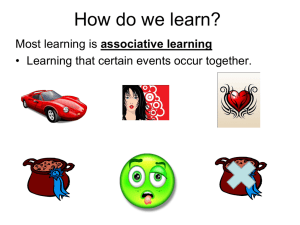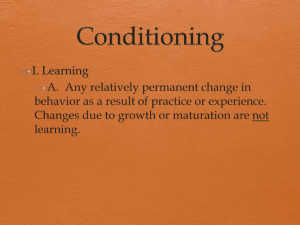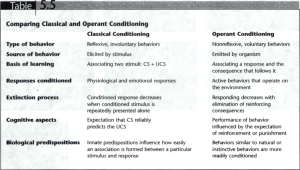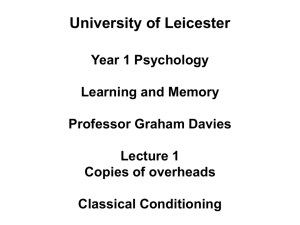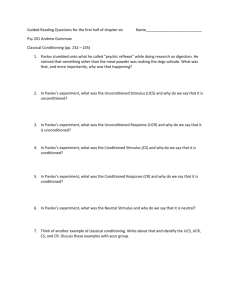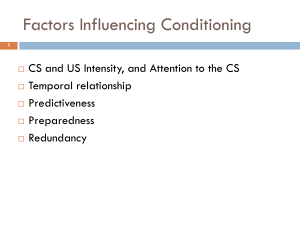281 Lecture 4
advertisement
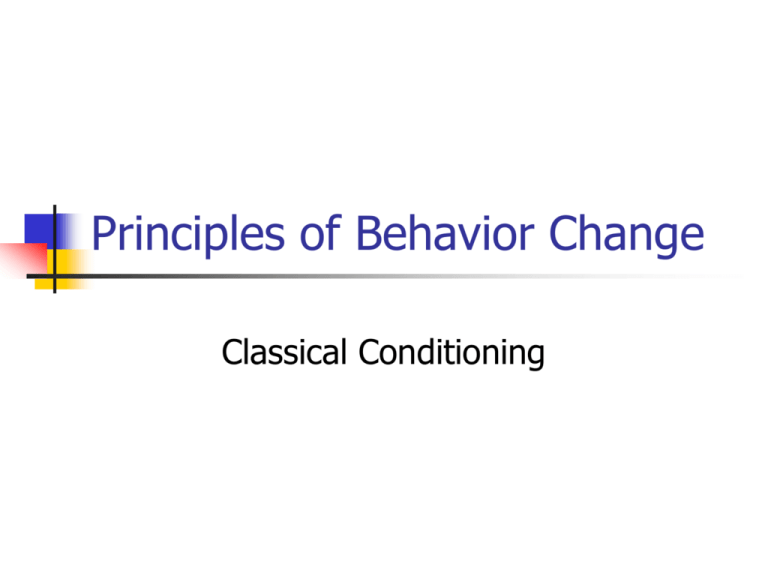
Principles of Behavior Change Classical Conditioning Determinants of Conditioning 1) Strong UCSs produce strong CRs 2) as # of pairings of NS + UCS increase, conditioned response is more likely 3) more consistent pairings result in faster conditioning 4) NSs of attention are more likely to become CSs 5) Timing of the CS and the UCS makes a difference. Forward arrangement with short delay is best. 6) Short delay is optimal for classical conditioning 7) Exception: taste aversion = long delay between CS and UCS. Measuring Strength of Conditioning A. Amplitude: how strong is the conditioned response? B. Latency: how quick? C. Probability: how likely? D. Resistance to extinction (the longer it takes to get rid of, the stronger the conditioning) Extinction extinction = the gradual weakening and disappearance of a conditioned response tendency spontaneous recovery = partial recovery of the conditioned response Acquisition, Extinction, and SR Disinhibition The sudden recovery of a response during an extinction procedure when a novel stimulus is presented Stimulus Generalization The tendency for a CR to occur in the presence of a stimulus that is similar to the CS. Generalization 60 50 40 30 Rabbits 20 10 0 400 800 1200 1400 1600 Stimulus Discrimination The tendency for a response to be elicited by one stimulus and not another Stimulus Discrimination With training, CRs at 400, 800, 1600, 2000 should extinguish, which is a process known as stimulus discrimination. Discrimination 60 50 40 Red = ? 30 Rabbits Black = ? 20 10 0 400 800 1200 1400 1600 Experimental Neurosis results from competing excitatory and inhibitory conditioned responses. Study: dogs trained to discriminate between a circle (food- excitatory) and an ellipse (no food, inhibitory) Step 1: train dog to discriminate between stimuli Step 2: gradually change shape of circle and ellipse so they resemble one another more. Experimental Neurosis Oval Circle No Food Experimental Neurosis Result: Dog does not know how to respond and get aggressive under this condition. Experimental Neurosis is at the base of many psychological disorders like anxiety. Different Patterns for EN 1) anxious 2) rigid/hypnotized 3) angry Why different patterns? Conditionability Personality according to Pavlov Some dogs condition easily e.g., shy, withdrawn dogs Some dogs do not e.g., outgoing Higher-order Conditioning Phase 1) Higher-order Conditioning CS1 Phase 2) CS2 UCR, CR UCS Third Order Conditioning Sensory Preconditioning: Phase 1) Phase 2) sound (NS) + black square (NS) Sound CR Phase 3) Black square CR Three Limitation Classical Conditioning 1) Overshadowing When one stimulus is more readily noticed relative to another 2) Blocking Blocking, Phase 1 Blocking, Phase 2 3) Latent Inhibition A familiar stimulus is more difficult to condition as a CS than an unfamiliar (novel) stimulus Also known as CS pre-exposure effect The ability to not condition to everything is adaptive. Latent Inhibition and Disorders Schizophrenia





